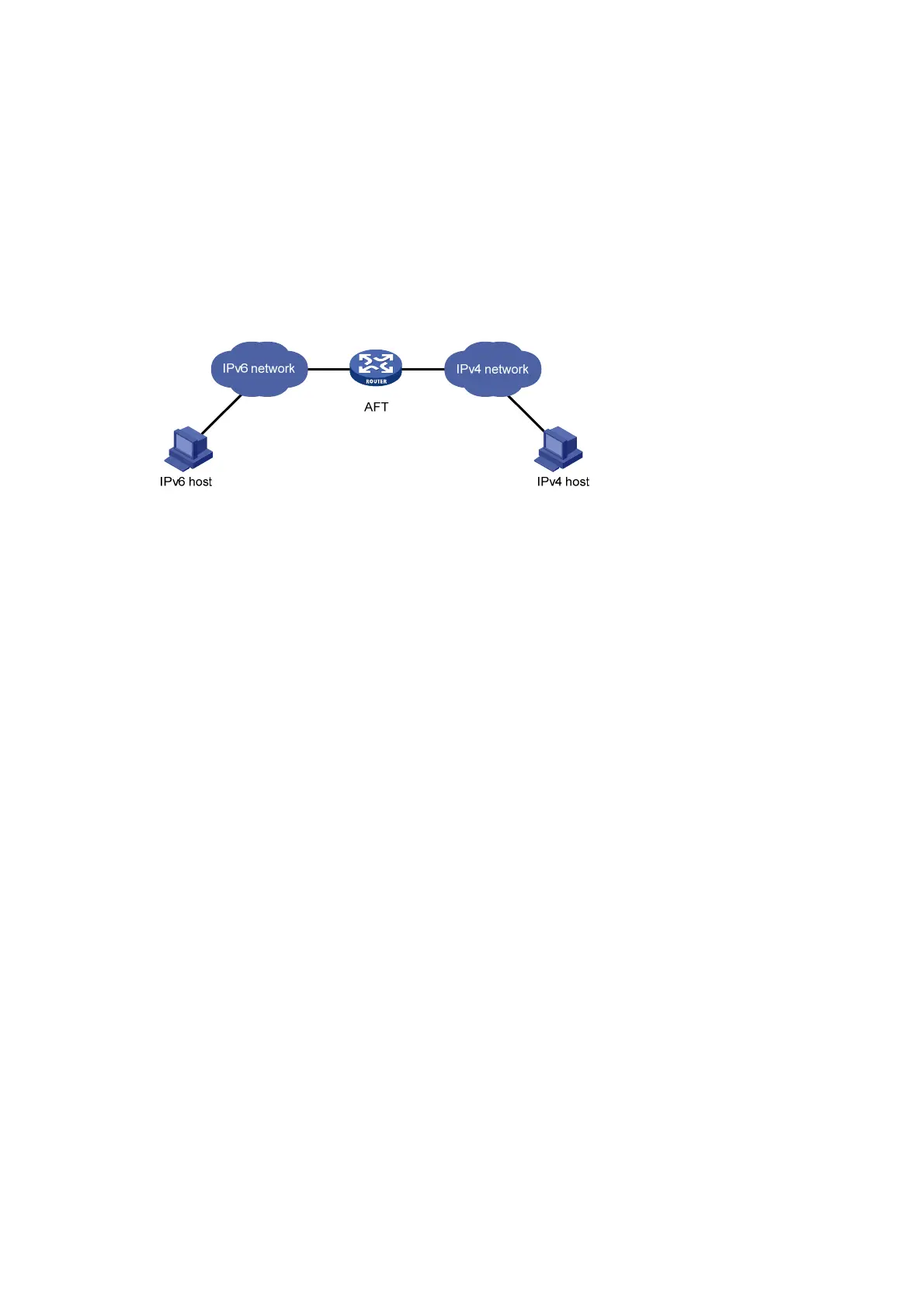440
Configuring AFT
Overview
Address Family Translation (AFT) translates an IP address of one address family into an IP address
of the other address family. It enables an IPv4 network and an IPv6 network to communicate with
each other, as shown in Figure 155. Th
e IPv4 host and the IPv6 host can communicate with each
other without changing the existing configuration.
Figure 155 AFT application scenario
Command and hardware compatibility
Commands and descriptions for centralized devices apply to the following routers:
• MSR1002-4/1003-8S.
• MSR2003.
• MSR2004-24/2004-48.
• MSR3012/3024/3044/3064.
• MSR954(JH296A/JH297A/JH298A/JH299A/JH373A).
• MSR958(JH300A/JH301A).
Commands and descriptions for distributed devices apply to MSR4060 and MSR4080 routers.
AFT implementations
Static AFT
Static AFT creates a fixed mapping between an IPv4 address and an IPv6 address.
Dynamic AFT
Dynamic AFT creates a dynamic mapping between an IPv4 address and an IPv6 address.
When dynamic AFT performs IPv6-to-IPv4 source address translation, the Not Port Address
Translation (NO-PAT) and Port Address Translation (PAT) modes are available.
NO-PAT
NO-PAT translates one IPv6 address to one IPv4 address. An IPv4 address assigned to one IPv6
host cannot be used by any other IPv6 host until it is released.

